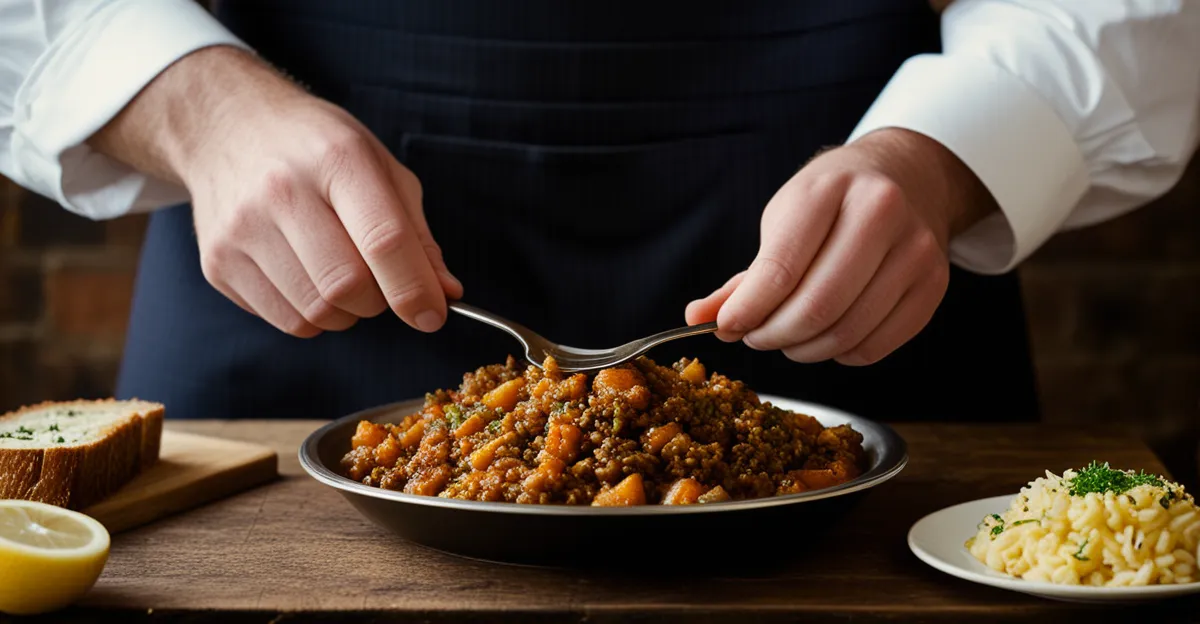Key Features Defining Traditional UK Cuisine
Traditional UK cuisine is recognised for its unique elements that blend simplicity, comfort, and seasonal freshness. One of the defining characteristics of British food is its focus on hearty, home-cooked meals that bring warmth and satisfaction. Comfort food such as stews, roasts, and pies showcases straightforward preparation methods and familiar flavors, emphasizing ease without sacrificing quality.
A central aspect of what makes British cuisine distinct is its reliance on seasonality and local ingredients. Ingredients like root vegetables, locally reared meats, and fresh seafood from coastal regions highlight the UK’s agricultural and geographical diversity. This connection to local produce ensures that dishes reflect the rhythms of the seasons, producing authentic and vibrant flavours.
Also to discover : What are some innovative recipes for using clotted cream?
In addition, traditional UK cuisine values simple, wholesome recipes that have been handed down through generations. This combination of comfort, seasonality, and the use of local produce creates the unmistakable foundation that defines British food and sets it apart within global culinary traditions.
Iconic British Dishes and Their Significance
Traditional UK meals are renowned for their rich history and cultural resonance. Among the iconic British dishes, the roast dinner stands out as a defining symbol, epitomising comfort and family gatherings. Typically featuring roasted meats such as beef or lamb, accompanied by roasted potatoes, seasonal vegetables, and Yorkshire pudding, it exemplifies the hearty simplicity central to British cooking.
Topic to read : How Has UK Cuisine Evolved Over the Last Century?
Pies also hold a special place in British cuisine, blending homemade pastry with savory fillings like steak and kidney or chicken and mushroom. Their appeal lies in combining flaky textures with robust flavors, making them a staple in many households and pubs.
Another quintessential dish, fish and chips, represents not just a meal but a national institution. This deep-fried fish served with crispy chips highlights how traditional UK meals accommodate simple, affordable ingredients while offering satisfying flavors.
Afternoon tea, though less about sustenance, carries cultural weight as a classic British ritual. Served with finger sandwiches, scones, and pastries, it nourishes social connection and tradition.
Together with classic puddings and desserts, these dishes showcase the defining characteristics of British food, illustrating why these meals remain beloved and integral to UK cuisine.
Unique Ingredients in Traditional UK Cooking
Traditional British ingredients are foundational to UK cuisine, shaping its flavours and character. Meats like beef and lamb are staples, reflecting the UK’s pastoral heritage. These proteins often pair with root vegetables such as carrots, parsnips, and potatoes, which thrive in the British climate. Grains like barley and oats also feature prominently, especially in porridges and stews.
Regional variations bring distinct local produce into play. Coastal areas supply fresh seafood, including cod, hake, and shellfish, integral to dishes like fish and chips and seafood pies. The UK’s diverse landscapes support a variety of cheeses—such as Cheddar from the West Country and Stilton from the Midlands—adding depth to many recipes.
Signature flavourings enhance traditional dishes. Mustard adds a sharp, tangy note often used in meat marinades or sauces. Vinegar, especially malt vinegar, is a classic accompaniment to fried foods. Mint sauce, prized for its refreshing zest, commonly accompanies lamb, highlighting the defining characteristics of British food through simple yet effective seasoning.
In essence, the use of local produce in British food emphasizes freshness, seasonality, and a connection to place, all of which contribute to what makes British cuisine distinct.
Distinctive Cooking Methods and Food Preparation
Traditional British cooking techniques emphasize baking, roasting, stewing, and boiling, each contributing to what makes British cuisine distinct. Roasting, for instance, is vital for the classic Sunday roast, delivering tender meats and crispy vegetables. Stewing and boiling allow flavors to meld slowly, perfect for hearty dishes such as beef stew or Lancashire hotpot.
The skillful use of homemade pastries is another defining characteristic of British food. Savory pies—filled with meat and vegetables—are crafted with flaky, buttery crusts. These pies combine convenience and flavour, reflecting the UK’s culinary heritage of comfort and practicality.
Additionally, open-fire and slow cooking methods have historically influenced British food preparation. Slow cooking retains moisture and deepens flavors, ensuring dishes are both satisfying and rich. This technique remains relevant, especially in traditional UK meals that require long cooking times for tougher cuts of meat.
Together, these preparation methods highlight the unique elements of UK cuisine—transforming simple, local ingredients into nourishing, soulful meals that celebrate British culinary tradition.
Regional Specialties and Local Variations
Traditional UK cuisine showcases rich regional British cuisine marked by distinct dishes that reflect local cultures and ingredients. Yorkshire pudding, famous throughout England, originated as a simple batter baked alongside roast meat, epitomizing the defining characteristics of British food: hearty, comforting, and tied to local traditions. Similarly, the Cornish pasty, a pastry filled with meat and vegetables, highlights the practical culinary roots of Cornwall’s mining communities.
Scottish food offers unique fare like haggis, made from sheep’s offal and oats, symbolizing the rugged Highland landscape and resourcefulness. Welsh cuisine features dishes such as Welsh rarebit, a cheese-based toast, ingenious in its simplicity and flavor.
The influence of geography shapes these dishes: coastal regions emphasize fresh seafood, while inland areas lean toward meat and dairy products. This interplay ensures the unique elements of UK cuisine continuously celebrate local identity and biodiversity.
Regional diversity forms a cornerstone of what makes British cuisine distinct, demonstrating an enduring respect for locality within the broader UK culinary heritage. Whether through distinctive flavors or traditional preparation, these specialties underscore the UK’s vibrant, multifaceted food culture.
Historical Influences on UK Cuisine
The history of UK cuisine reveals how global connections and historic events have deeply shaped British food. A key factor is the British Empire’s vast reach, which introduced exotic spices, ingredients, and cooking styles that were gradually integrated into traditional recipes. This fusion enriched what makes British cuisine distinct by adding complexity and new flavors. For example, curry powders and chutneys became popular additions, reflecting this colonial legacy.
Wartime rationing and economic hardship also influenced the evolution of British cuisine, encouraging resourcefulness and simplicity. During these times, hearty and filling dishes were created to sustain populations, embedding a tradition of comfort food that remains central today. Staples like stews and casseroles thrived because of their ability to stretch limited ingredients without sacrificing warmth and satisfaction.
Moreover, global trade brought new staples like tea, sugar, and potatoes, which have become synonymous with British dining. These imports reshaped dietary patterns and culinary habits, illustrating the layered history behind the defining characteristics of British food.
Understanding these historical influences offers insight into why traditional UK meals reflect a blend of practicality, comfort, and global touches, all wrapped in a unique British identity.
Cultural and Social Significance of British Food
British food holds a profound place in the UK cuisine heritage, serving as a cornerstone of family and social life. Traditional meals often gather loved ones around the table, reinforcing bonds and communal warmth. The British food cultural significance lies not only in nourishment but in the shared experience of hospitality and togetherness.
Pub culture exemplifies this social aspect. Pubs are hubs where traditional UK meals are enjoyed amid conversation, laughter, and local camaraderie. Communal dining in such settings strengthens community ties, highlighting what makes British cuisine distinct beyond mere flavors.
Moreover, the rituals surrounding food further express identity. Sunday roasts and afternoon teas are cherished customs that celebrate continuity and tradition within families and society. These practices underscore the deeper role of food in expressing the defining characteristics of British food—comfort, heritage, and inclusiveness.
In essence, British cuisine functions as a living thread linking history, culture, and social interaction, making each meal a celebration of identity and connection within the UK.





